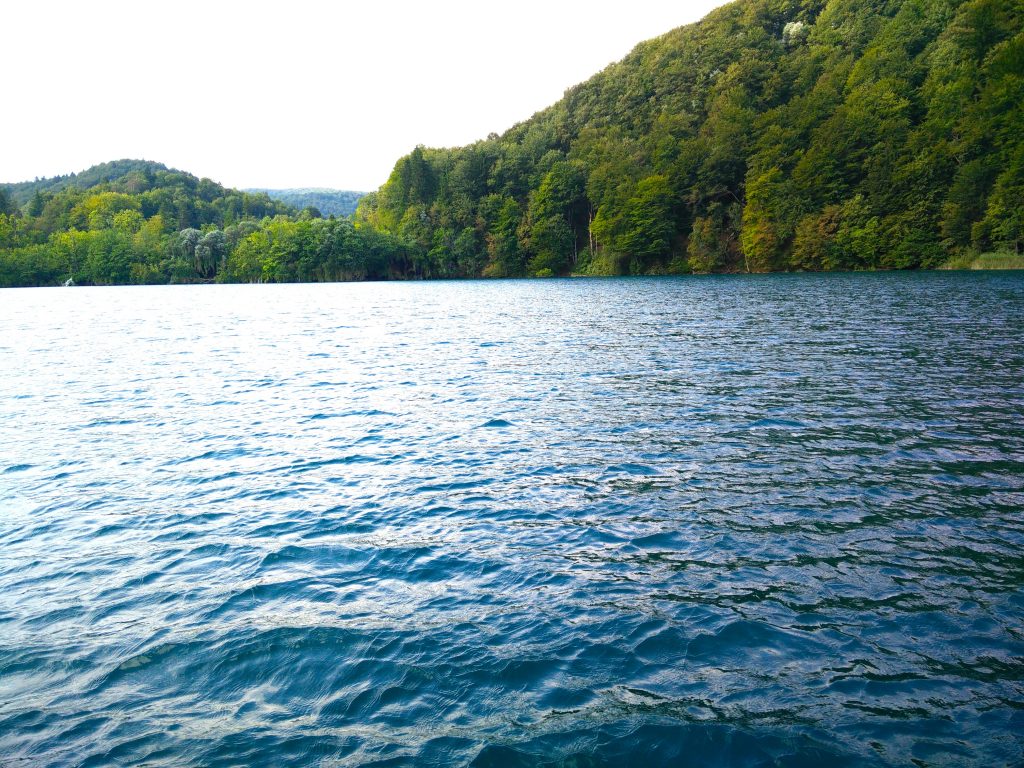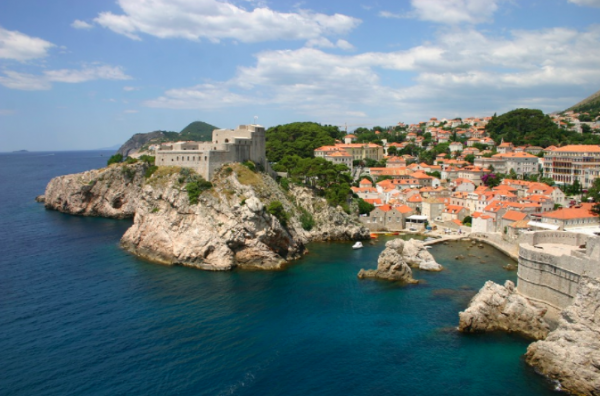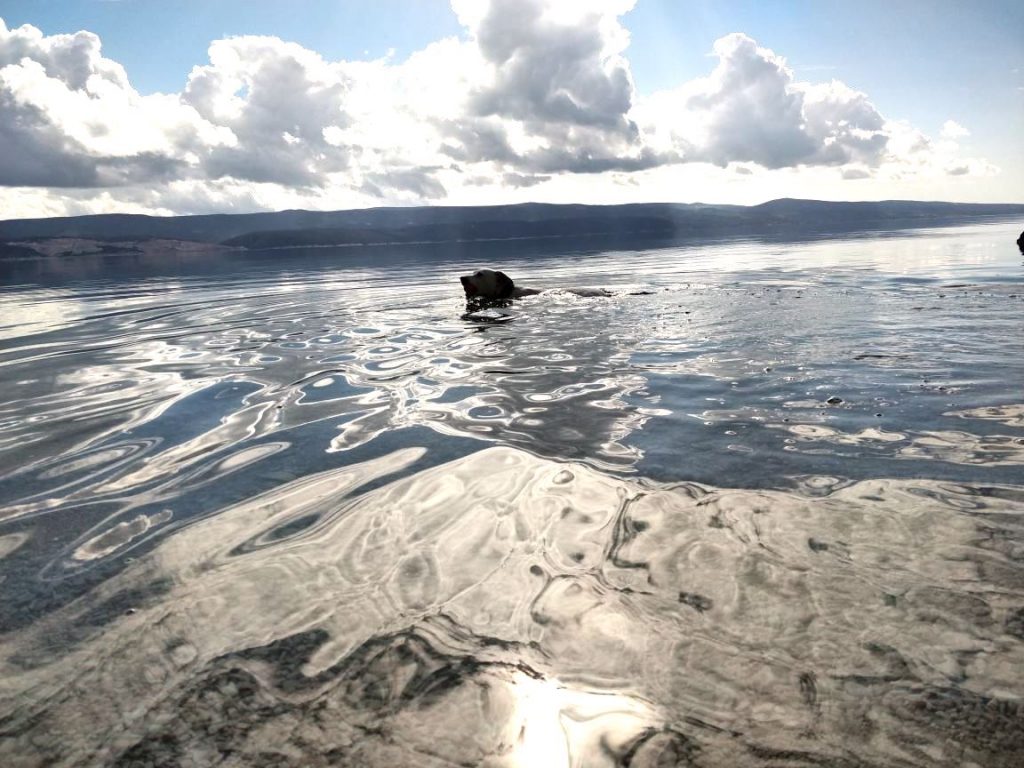Route & Highlights
It was the beginning of March 2018, and you can possibly imagine how much I was looking forward to get out of the cold in Germany, Czech Republic and Austria. My route took me from Graz over to Zagreb – Hello Croatia! Wait a second – snow?! Yep, that was pretty much of a surprise. The inland of Croatia just got hit by a winter storm with over 1 meter of new, fresh bright white snow. And I was right in the middle of it – on Summer tires.
So I decided to quickly drive over to the coastal line, where the weather got much milder with temperatures between 10 and even 18 degrees Celsius. Istria and the islands Cres and Krk were definitely my route highlights followed by Plitvice Lakes and further along the beautiful coastal route with my final destination Dubrovnik.
Overall, I spent three weeks in Croatia with almost 15 hours on the road making distance on my way to Greece with over 1.000 kilometers.
Here is my super scenic route in detail:

Landscape & Scenary
Croatia is incredibly rich in diverse natural landscapes, from the gentle hills of the inland over to Istria to the Dalmatian coast and the mountains of the Dinaric Alps.
Many national parks characterize the beauty of Croatia. The Plitvice Lakes National Park is one of the most impressive scenaries I have ever discovered. Ice blue lakes, crystal clear turquoise rivers and even a 80 meters high waterfall surrounded by rich green forests.
Driving along the coast is one of the highlights in Croatia as well – you just have to do it. Such a pretty scenary with uncountable possibilities to stop, enjoy the view from the cliffs or go for a swim in the clear Adriatic Sea at the very natural beaches.
Beaches. Another characteristic of Croatia. There are hundreds of little bays with sandy, gravel or rocky beaches to discover. Fiete loved his ball chasing runways that couldn’t differ more from location to location – such a beach variety!
Follow me on my top points of interest to see when you are in Croatia. From cities such as Zagreb and Dubrovnik to the largest peninsula Istria and the islands Cres and Krk.
Explore & Discover
Zagreb
Zagreb is the capital and also the largest city of Croatia. It is located in the northwest of the country, along the Sava river, at the southern slopes of the Medvednica mountain. Zagreb metropolitan area population is a little above 1 million inhabitants and it makes approximately a quarter of a total population of Croatia.
The city itself is not one of the tourist’s well known hotspots as most of the visitors come to Croatia for summer relaxation, beaches and the sea.
As Zagreb was on my way to the coast anyway, Fiete and I made a quick stop to explore the main points of interests such as the Dolac Market, the Cathedral of Zagreb and go on a ride with the funicular (Zagrebačka uspinjača), which gives you a fast view over Zagreb. In a total of 50 seconds, you’ll reach the top of the hill, see how short the ride is.
Overall, it is a neat Mediterranean city to stop by if you are coming along anyway, but it is definitely not worth spending more than one or two days here as there is not much to see.
Istria
Istria is the largest peninsula in the Adriatic Sea located at the head of the Adriatic between the Gulf of Trieste and the Kvarner Gulf. It is shared by three countries: Croatia, Slovenia, and Italy.
Istria is the most touristy area in Croatia, especially in Summer times. One campsite after another, restaurants with German menus offering”spanferkel” (pig on a stick) and entertainment attractions such as waterparks mainly shape the peninsula. If you do not come to Istria in the high season, you will see a totally different picture.
From a landscape perspective, it is mainly agricultural with wide fields and flowering meadows. On the coast, small bays alternate with steep sections.
One of the most beautiful natural landscapes of Croatia lies at the top of Istria, at the Cape Kamenjak. The cape is best explored on foot or by bike, not only because you get so much more out of the beautiful landscape, but also because the cars on the gravel roads would badly affected.
More than 500 different plant species, including more than 20 species of orchids alone, can be found here. Beautiful are the bright cliffs of the coast, which stand out bright white from the azure sea. In the branched coast numerous small bays are buried, which invite for swimming and sunbathing.
The only Istrian National Park here is Brioni Islands off the coast of Pula. The islands are considered one of the most beautiful archipelagos of the Mediterranean and also enchant by the wonderful underwater world. Ships to the islands depart from Fazana, Pula and Rovinj. I can totally recommend to take the time and explore the area from the sea.
Cres
The island of Cres is the first island of the Croatian Adriatic. It is located in the Northern part of the Kvarner Bay region. In the North you can cross by ferry from Brestova to Porozina onto Cres. In the South Cres is connected to the island of Losinj. Another ferry connection is between Valbiska (island Krk) and Merag.
On the South and West coast of Cres, you can find numerous bays and pebble beaches, while the North and East coasts are mostly rocky. From the peaks of the mountains you have a magnificent view over almost the entire Kvarner bay.
One of the highlights on Cres is the freshwater lake Vrana. The lake is located about 16 km south of the city of Cres in the middle of the island and has a total area of 5.75 km² and the surface is higher than the sea level. The deepest point of the lake is about 74 m below sea level.
The vegetation on the island is very varied. In the North of the island there are dense forests with oaks, chestnuts and elms. Towards the South, the vegetation becomes increasingly Mediterranean with barren pastures and dense scrub.
Krk
The island of Krk, which is the largest island in Croatia with an area of about 406 km², is located at the beginning of the Kvarner Bay region just after Cres and can easily be reached by car from the mainland via the Krk bridge near Kraljevica. Watch out to not cross the bridge when it is windy. I can tell you, I had some sweat drops on my forehead and tears in my eyes when I drove through a stormy passage with my motorhome.
The island itself is very unique – be it through its long history, its valuable cultural assets, its nature or its beautiful bays.
There are over 60 small villages, towns and cities, in which live approximately 18.000 inhabitants live. If you are there, definitely visit the city Krk.
The city of modern Krk is separated from the historical part by a waterfront which is very impressive to see. From the lively and friendly Riva waterfront, you will pass through the medieval city gate and into the 2000-year-old urban center surrounded by city walls. The square Vela placa right at the beginning is the center piece on which life pulsates. Shops, boutiques, cafes and restaurants invite you to stroll and explore.
Dubrovnik
Although Dubrovnik is a small town that only hosts about 40,000 people, it offers a variety of interesting places to visit. Most of them are protected by UNESCO and appreciated worldwide for their tremendous historical and cultural value.
The old town, the ancient city center, is a monument in itself. It consists almost entirely of historically significant buildings, some dating back to the early Middle Ages, which represent architectural wonders of the Romanesque, Baroque and Renaissance periods.
The Church of St. Blaise, patron saint of the city, is a beautiful sacral object built by the Venetian masters in the early eighteenth century. Its rich Baroque style and the silver statue of St. Blaise make it one of the most recognizable sights in Dubrovnik.
Perhaps the most famous part of Dubrovnik’s old town is the Stradun, the main street that divides the old town into two parts, the northern and the southern. It is the most popular and certainly the most beautiful street in the city and a well-known meeting place and venue for all festivals and public events. The Stradun is surrounded by numerous attractions and historic buildings, including the grand Onofrio fountain, the municipal bell tower, the famous Sponza Palace and Orlando’s Column.
Dubrovnik has much to offer – from ancient city parts to interesting churches and fantastic restaurants. Not to mention the center with its small boutiques and stores to stroll and do some sightseeing shopping. If you have the time, I recommend to stay for at least two to three nights to fully enjoy the beauty of the city.
Food & Drinks
My personal favorite section. The question of “wine & dine” can be answered quite simply. A wide variety of food can be found in Croatia anywhere. And that is manifold, because this country not only offers sun, beaches and sea, but also numerous hotels, pensions, inns, taverns, pizzerias and – if you like – also fast food restaurants.
Since my trip, I am a big fan of the typical konobas, which are small local restaurants on the Adriatic coast mainly in Dalmatia. You can taste the influence of Roman, Greek and Illyrian alongside the modern French and Italian cuisine.
Typical dishes are grilled lamb or suckling pig – Spanferkel, as well as Raznjici and Cevapcici. But also – especially near the coast – fish and calamari land on the grill – yummy.
For dessert you will find a lot of sweet cake and cookies but also cheese and ham. The quality and service in konobas I have been to has always been outstanding for relatively little money and super fresh local produce.
Wines whose grapes are grown in Dalmatia, Kvarner Bay or Istria are very popular for dinner and sometimes even lunch. From Merlot, Plavac, Postup, Kabernet and Teran, the locally produced red wines taste great – especially with the rustic meals served. But also white wines of the region, such as Malvazia, Pinot, Zlahtina, Muscat and Kujundzusa, are often drunk and can strongly be recommended.
But also beer lovers come at their cost.The Croatian “Pivo”, as beer is called here, is mostly locally brewed and tastes milder than for example German Pilsner. It’s just right for balmy summer evenings. Among the best known are the brands Ožujsko Pivo, Staro Češko Pivo, Riječko Pivo, Tomislav Pivo, and the Karlovačko among some others. Believe me, I have tried them all.
Summary & Next Stop
All in all, Croatia has positively surprised me very much in its rural diversity. Mountains, sea and islands is an appropriate three word description for this scenic country. The coastline with its over 1.000 kilometers and over 1.00o small and bigger islands is very impressive and cannot be compared to any other view I have ever seen across Europe. Scenic Croatia is highly attractive and offers a total of ten protected natural parks and eight national parks – isn’t that outstanding? So much nature in one place.
The people are super friendly, accommodating and helpful. There were almost no language difficulties. Most of the Croatians speak German and English.
What I missed were sandy beaches though. The variety of coastal lines is tremendous, but you have to look hard for a really sandy and not pebbly and rocky beach. But if you are patient and check out as most beaches as possible, you will find your perfect spot – just as Fiete did pretending to be a seal swimming in the Adriatic sea.
Fiete and other dogs were always welcomed, no issues at all travelling with your partner on paws to Croatia. So all thumbs and paws up for Croatia!
Next stop will be Greece – watch out for our greek adventures to come soon.



























